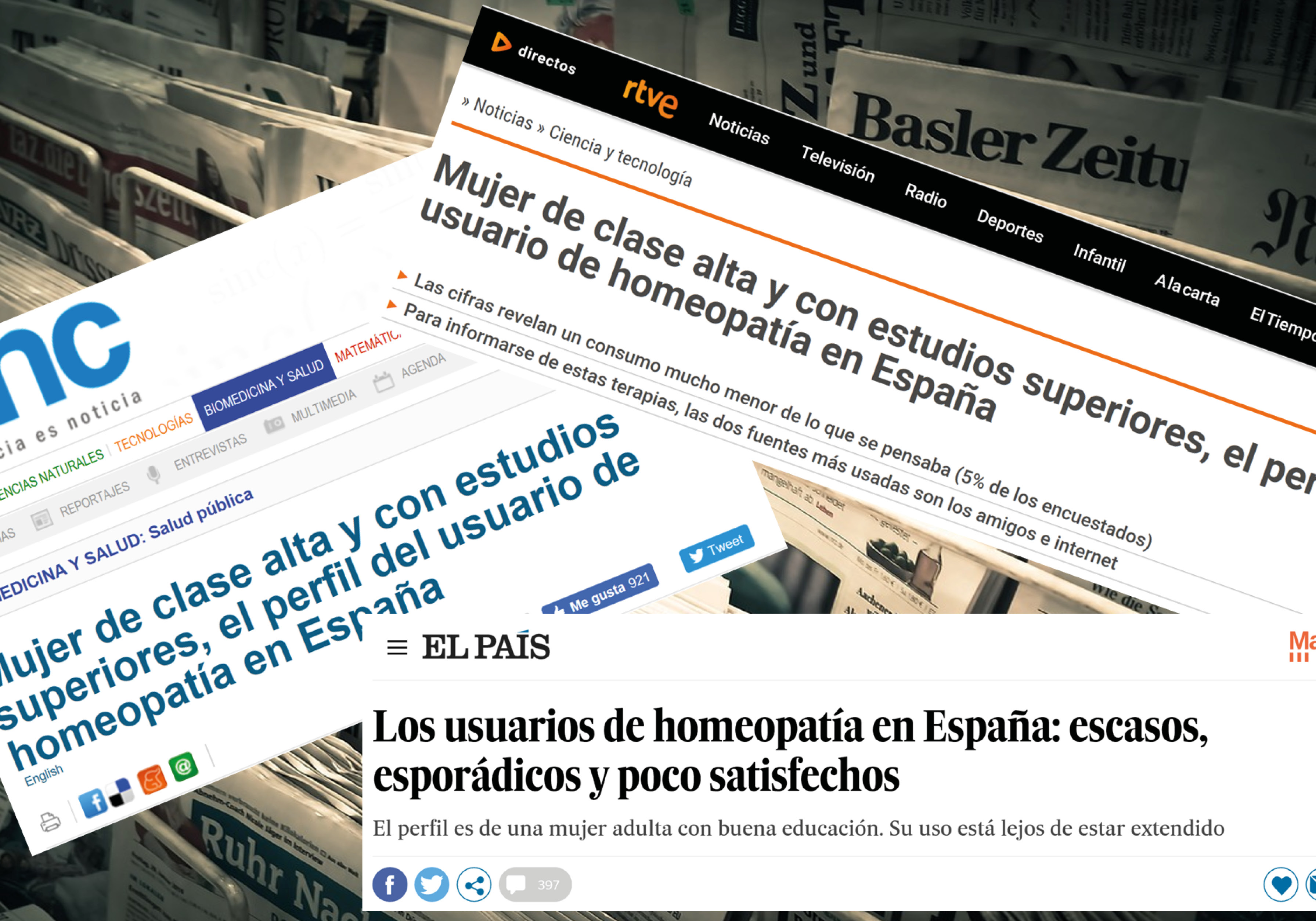
The research work entitled “Perfil sociodemográfico del usuario de la homeopatía en España” (‘Sociodemographic profile of the homeopathy user in Spain’) conducted by ScienceFlows researchers Lorena Cano, Isabel Mendoza and Carolina Moreno, and published first online in the magazine Atención Primaria, last September appeared in, at least, 11 digital media, among which Agencia Sinc and El País stand out.

The study was carried out based on the results of the CIS survey of February 2018. For this purpose, a subsample of 124 people was selected, who answered that they were homeopathy consumers. Based on the answers provided by these interviewees, the profile of the type of homeopathy user in our country was defined: middle-aged woman, with higher education, upper middle class and left-wing ideologically self-positioning. In addition, the analysis of other issues related to alternative therapies allowed concluding that “the main channel of information used to know alternative therapies are friends and acquaintances (70.16%)” and that “90.2% of the respondents said they knew and understood what homeopathy was based on”.
Although the CIS results point to a low homeopathy use in our country, knowing the typical user can help us make a more targeted communication so that its possible use is informed. Likewise, and as indicated by the Agencia Sinc, the authors defend the need to work on scientific dissemination from public and health institutions. For example, the fact that the sale of these preparations is limited to the pharmaceutical field leads to confusion.
More information:
- Agencia SINC: Mujer de clase alta y con estudios superiores, el perfil del usuario de homeopatía en España
- El País: Los usuarios de homeopatía en España: escasos, esporádicos y poco satisfechos
- Rtve.es: Mujer de clase alta y con estudios superiores, el perfil del usuario de homeopatía en España
- Telecinco: El perfil del usuario de homeopatía en España: mujer de clase alta y con estudios superiores
- ABC: Mujer de clase alta y con estudios superiores, el perfil del usuario de homeopatía en España
- El Español: ‘Pija’, universitaria y ‘progre’: el perfil detrás del consumidor de homeopatía
- La Voz de Cádiz: Mujer de clase alta y con estudios superiores, el perfil del usuario de homeopatía en España
- El Boletín: Mujer de clase alta y con estudios superiores, el perfil del usuario de homeopatía en España
- TICbeat: Homeopatía: sus clientes son mujeres de clase alta, de izquierdas y con estudios universitarios
- Redacción médica: El consumidor de homeopatía: mujer, católica, de clase alta y de izquierdas
- Jano: Mujer de 46 años, clase alta y con estudios superiores, el perfil del usuario de homeopatía en España
* Image from the paper: Cano-Orón L, et al. ‘Perfil sociodemográfico del usuario de la homeopatía en España’. Atención Primaria 2018. https://doi.org/10.1016/j.aprim.2018.07.00









